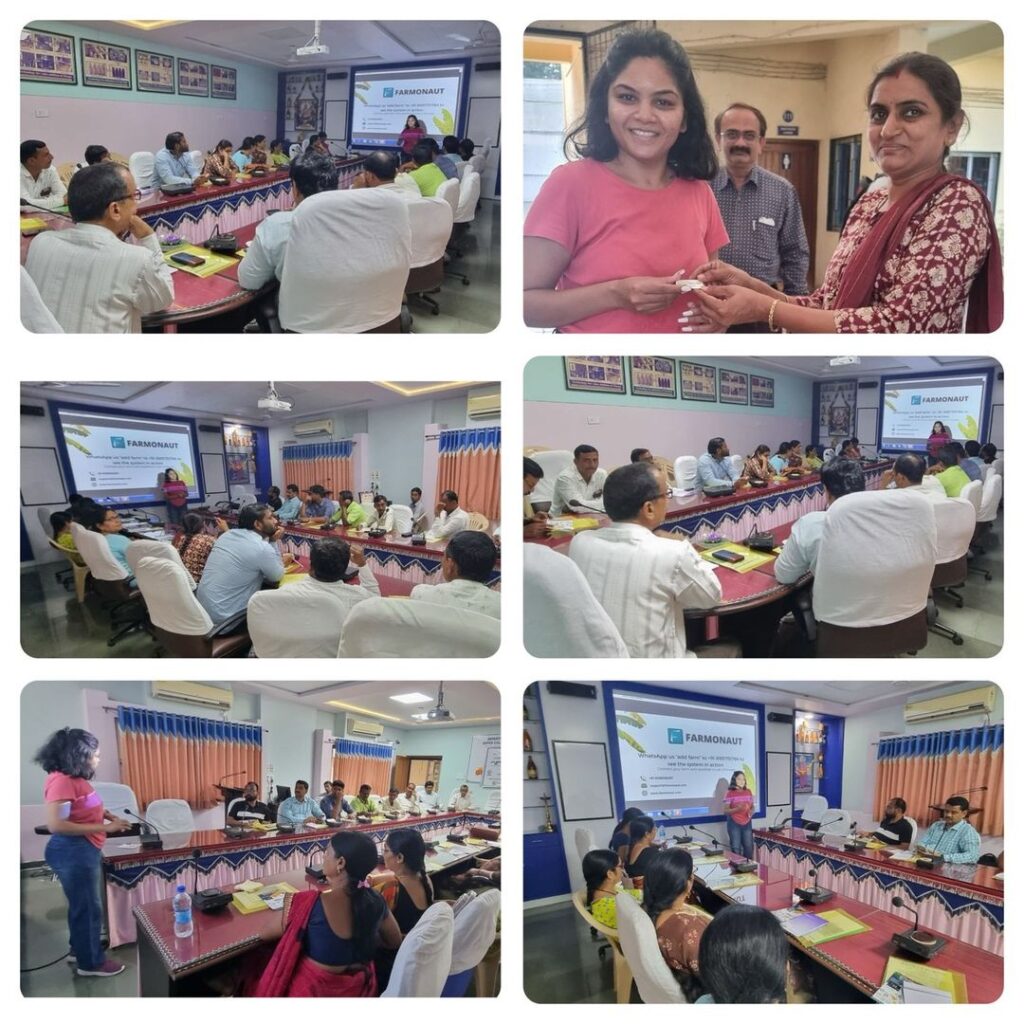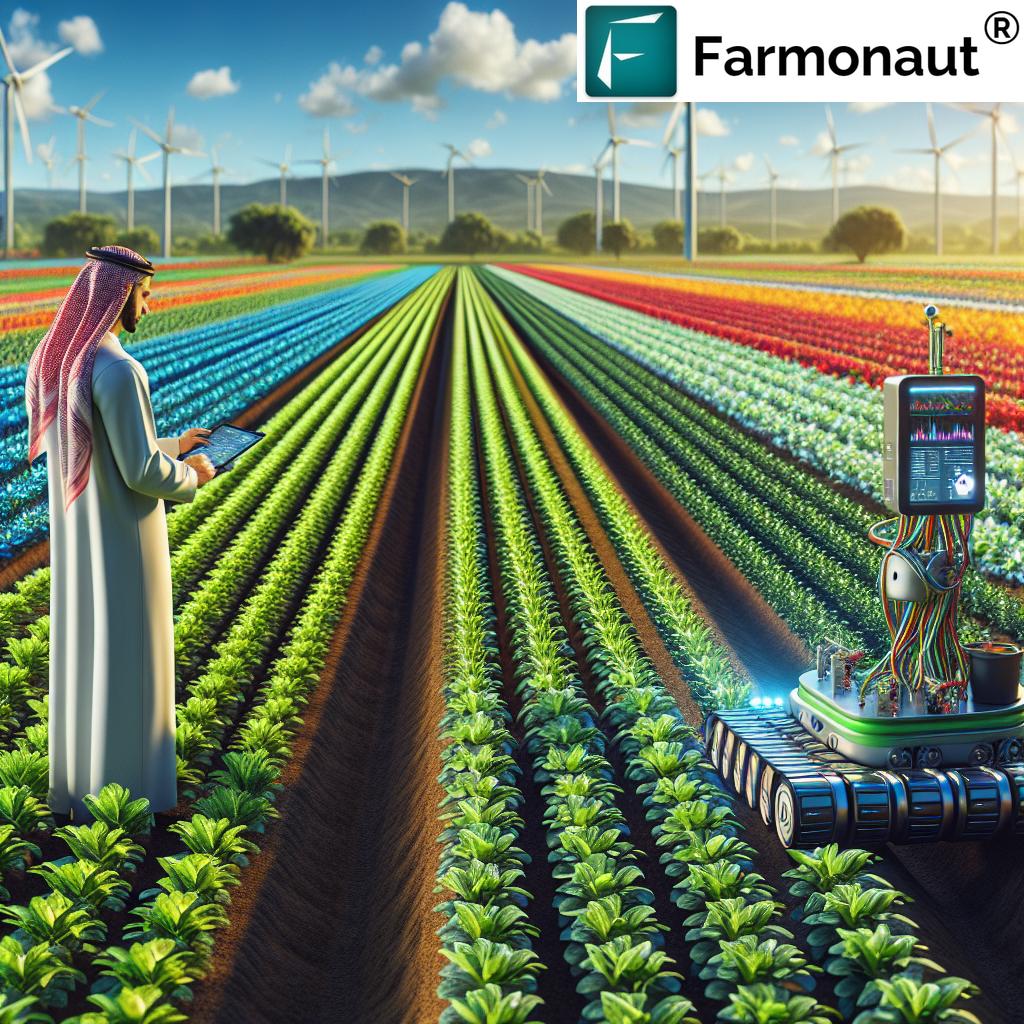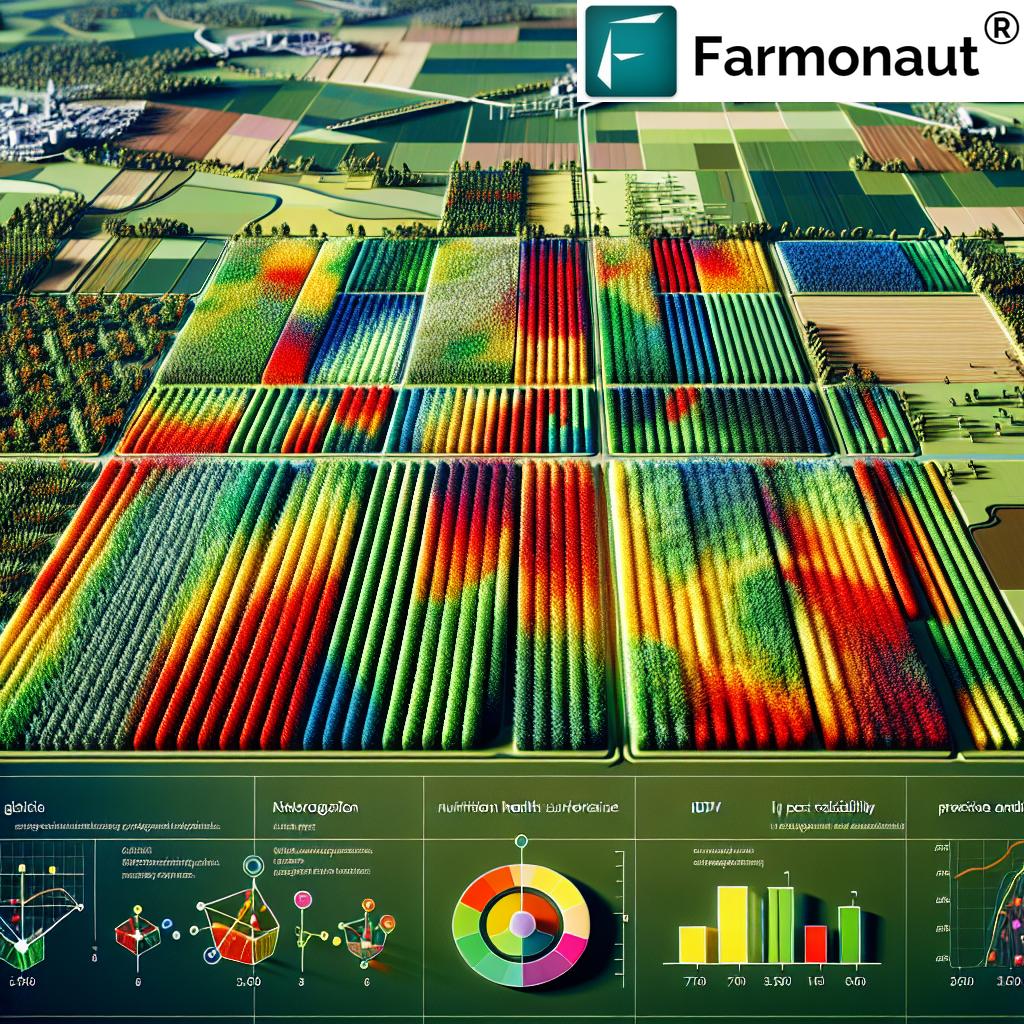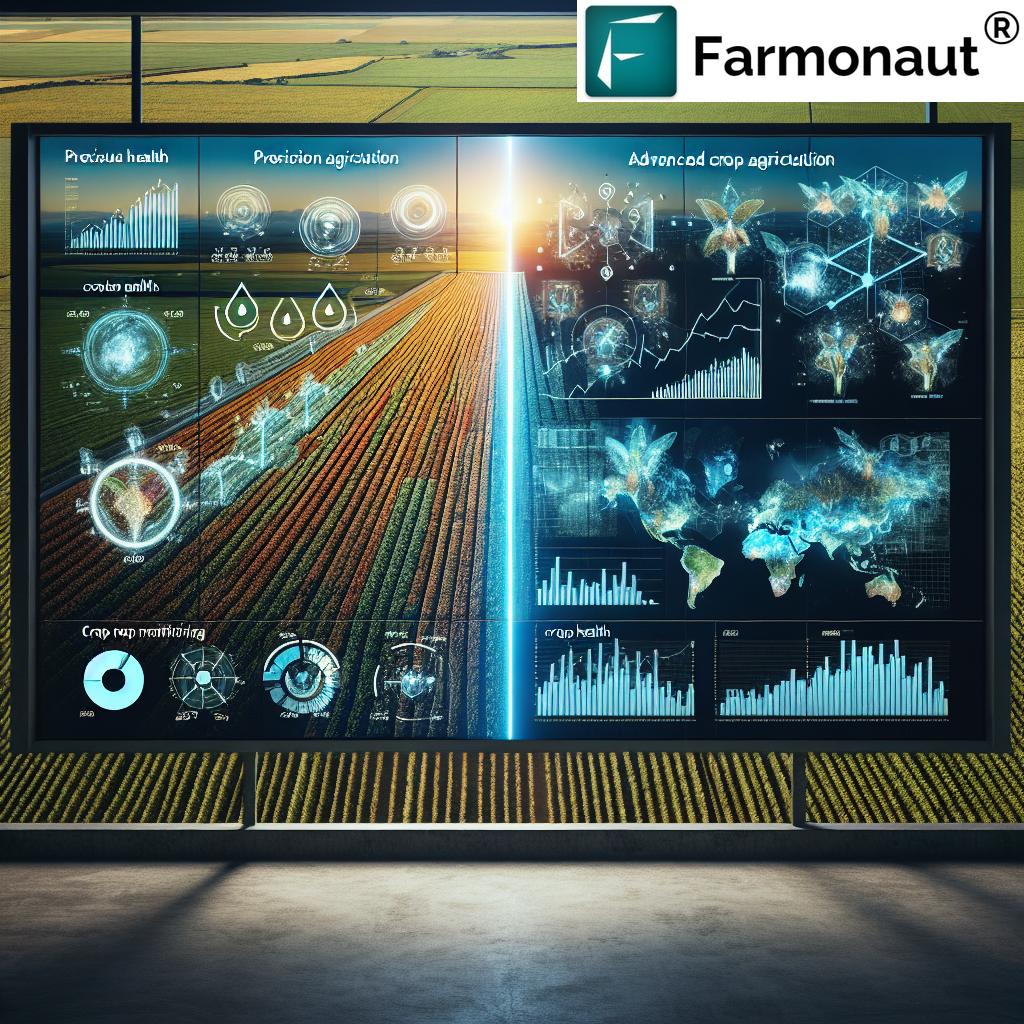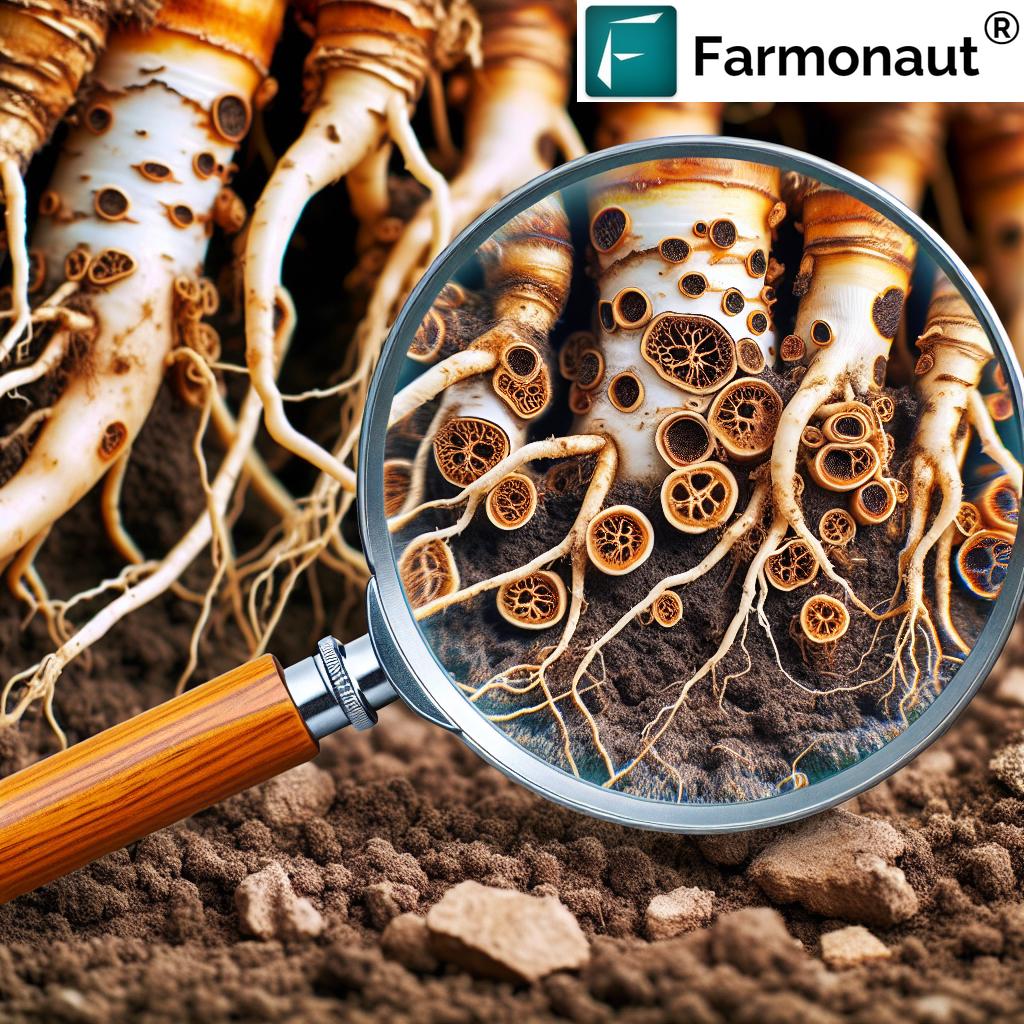AI for Agriculture Course: 2025 Precision Trends
Meta Description: Discover top AI for agriculture course trends for 2025. Dive deep into AI, data analytics, and precision farming techniques shaping the future of sustainable agriculture worldwide.
“Over 70% of 2025 agriculture innovations involve AI-driven precision farming techniques and advanced data analytics.”
Introduction to AI in Agriculture for 2025
Agriculture stands at the forefront of a technological revolution, driven by artificial intelligence (AI), to meet growing global food demand sustainably. AI for agriculture course offerings in 2025 thoroughly equip learners—from students, farmers, agronomists, researchers, to policymakers—with the modern skills to harness technologies that transform traditional practices into precision, data-driven farming.
The course structure typically begins by familiarizing students with core AI fundamentals such as machine learning (ML), computer vision, and data analytics. Emphasizing real-world applications, these modules explore how AI can analyze large datasets harvested from soil sensors, weather forecasts, drone imagery, and satellite images—all pillars of precision agriculture in 2025.
Key Focus: “Transforming raw agricultural data into actionable insights to increase yields, reduce resource waste, and foster sustainable practices at a global scale.”
With AI and ML evolving, 2025 courses emphasize learning about different algorithms, data sources, and real-time analytics—laying the foundation for modern decision support systems in farming.
Precision Farming Techniques: The Core of Modern Agriculture
One of the prime focus areas in any ai for agriculture course is precision farming. By optimizing the use of resources like water, fertilizers, and pesticides with AI algorithms, the course helps learners unlock next-generation efficiency. Modern precision agriculture techniques taught in 2025 include:
- Soil Health Monitoring: Utilizing AI-enabled sensors to assess soil conditions in real time, enabling variable rate applications of nutrients or water. This minimizes waste and enhances plant health on a per-zone basis.
- Crop Monitoring via Computer Vision: AI-powered computer vision techniques analyze drone and satellite imagery to detect crop diseases, nutrient deficiencies, and pest infestations as early as possible, often before visual symptoms appear.
- Irrigation Management: Advanced AI models analyze weather data, soil moisture levels, and historical crop requirements to predict optimal irrigation schedules. This promotes water conservation and maximizes yield potential.
- Variable-Rate Technology: With farm machinery now integrated with AI, inputs such as pesticides are applied at variable rates based on real-time field data. This reduces chemical overuse and lowers production costs.
Through these techniques, the ai for agriculture course enables students to maximize resource efficiency, minimize waste, and enhance both economic and environmental sustainability.
“By 2025, AI skills in agriculture are projected to increase job opportunities by 40% in tech-focused farm sectors.”
AI-Powered Farm Equipment & Automation Revolution
Modern farms in 2025 are increasingly reliant on autonomous machinery. The ai for agriculture course dives into how AI optimizes tractors, harvesters, and planting equipment for improved efficiency and output:
- Autonomous Tractors & Planters: AI-guided precision planting creates optimized patterns, reducing gaps and overlap, thus enhancing yields.
- Robotic Harvesters: AI-driven harvesting equipment boasts real-time adjustments for speed, path, and zone targeting based on sensor feedback and crop maturity data.
- Field Mapping & Task Scheduling: Detailed field maps generated with AI and satellite data facilitate automated task scheduling, resource allocation, and integration with other smart systems.
- Obstacle Detection & Route Optimization: Advanced algorithms help equipment autonomously navigate fields, detecting obstacles and selecting efficient paths to minimize operation time and labor costs.
In 2025, these automated systems reduce labor dependency and deliver substantial gains in productivity and sustainability.
For efficient logistics and equipment tracking, Farmonaut’s Fleet Management system offers AI-supported optimization for agriculture operations, reducing fuel consumption, improving asset utilization, and allowing seamless machinery monitoring right from your device.
Data Analytics and Decision Support Systems in Farming
Modern agriculture is data-intensive. Farmers, researchers, and agronomists generate vast amounts of data from sensors, satellite imagery, weather records, and machinery logs. This section of the ai for agriculture course covers:
- Predictive Analytics for Yield & Pest Management: AI algorithms analyze large datasets to build models for predicting crop yields, pest outbreaks, and market trends, enabling farmers to make informed decisions early.
- AI-Powered Decision Support Systems (DSS): DSS recommend optimal management practices—from planting to irrigation schedules, fertilizer types, to harvest timing and even crop rotation strategies. Integration ensures adaptive, data-driven solutions.
- IoT & Continuous Monitoring: The course demonstrates how IoT sensors and AI integration enable real-time monitoring of soil, weather conditions, water usage, and crop health.
- Big Data Management Tools: Modules introduce cloud-based analytics platforms where multiple datasets—from satellite data to machinery telematics—are processed and visualized for actionable insights.
By teaching how to analyze and interpret large agricultural data, the ai for agriculture course enables learners to drive productivity, reduce risks, and foster sustainable farming practices.
Integrate powerful, real-time agricultural insights with the Farmonaut API for crop health monitoring, environmental tracking, and resource optimization directly into your bespoke farm management or agri-tech platform.
Developers can refer to the in-depth Farmonaut API Developer Docs for seamless integration details.
Sustainable Agriculture and Climate Resilience Powered by AI
A critical facet of every ai for agriculture course in 2025 is sustainability. With climate change threatening global food security, AI is increasingly recognized for its role in sustainable agriculture and climate resilience:
- Optimizing Input Use and Reducing Emissions: Smart algorithms ensure precise use of fertilizers and pesticides, directly reducing agriculture’s carbon footprint and limiting runoff into the environment.
- Adaptive Responses to Climate Variability: AI models and satellite data forecast drought, floods, and pest patterns, informing rapid, region-specific crop management interventions.
- Support for Regenerative Practices: AI supports agroforestry and mixed cropping techniques by analyzing land suitability and predicting biodiversity outcomes. This integration is taught using case simulations within the courses.
- Resource Conservation with AI: From water conservation via automated irrigation management to efficient energy use in robotic harvesting, AI is central to sustainable farming systems.
For organizations seeking quantifiable carbon footprint reductions, Farmonaut’s Carbon Footprinting platform enables reliable monitoring and compliance tracking, supporting both sustainability goals and reporting requirements.
Technology Adoption Impact Comparison Table (2025)
For a concise overview, here’s a beautifully formatted table comparing the key AI-driven technologies taught in leading ai for agriculture courses, their estimated adoption rates by 2025, primary application in precision agriculture, and impact on yields or sustainability.
| AI Technology | Estimated 2025 Adoption Rate (%) | Main Application in Precision Agriculture | Estimated Impact on Yield / Sustainability |
|---|---|---|---|
| Remote Sensing (Satellite & Drone Imagery) | 70–75% | Large-scale crop monitoring, soil health assessment, precision input management | 12–25% yield increase, up to 20% input/resource savings |
| Predictive Analytics (ML Models) | 68–73% | Yield prediction, pest & disease forecasts, decision support | 10–18% yield improvement, 15% reduction in losses |
| Automated Irrigation Management | 62–68% | Water scheduling, moisture analytics, conservation techniques | 15–35% water savings, 12% reduction in energy costs |
| AI-Enhanced Variable Rate Application | 58–65% | Targeted fertilizer/pesticide distribution, cost reduction | 10–22% fertilizer saving, 8–15% pesticide efficiency boost |
| Robotic & Autonomous Equipment | 60–66% | Automated planting, harvesting, field mapping | 20–28% labor reduction, 14% improvement in harvest timing |
Real-World Applications & Video Resources
The ai for agriculture course curriculum in 2025 integrates modules exposing students to real-world applications of AI and data-driven insights. Some prominent practices covered include:
- AI-backed Early Pest Detection: Leveraging satellite imagery, sensors, and computer vision for early pest warnings, reducing yield losses and chemical usage.
- Drone-Based Monitoring & Spraying: Drones, guided by AI-generated flight paths, provide targeted spraying and health assessment at large scales.
- Autonomous Harvesting Robots: AI coordinated robots perform delicate tasks like fruit picking, minimizing bruising, and optimizing harvest windows.
- Satellite-Guided Resource Management: IoT and satellite solutions enable region-specific adaptation of farming cycles to weather and soil conditions.
To oversee expansive agricultural projects, Farmonaut’s Large Scale Farm Management Tools simplify multi-field tracking, resource allocation, and support decision-making for farm managers, ensuring high-level oversight with detailed satellite data analytics.
Critical Challenges, Access, and Ethical Considerations
While the future of agriculture is bright with AI, its rapid growth presents challenges and ethical responsibilities, which are vital components of a robust ai for agriculture course in 2025:
- Data Privacy & Security: Aggregating vast, sensitive datasets requires ethical data handling and robust cybersecurity to protect farmers’ and researchers’ information.
- Smallholder Access & Equity: There’s a gap in technology adoption—courses discuss strategies and policy needs to ensure inclusive access for small farms worldwide.
- Algorithmic Bias: Students learn the consequences of biased algorithms, which can lead to non-inclusive recommendations; developing transparent, auditable AI models is emphasized.
- Need for Regulatory Frameworks: AI-driven decisions affecting food production must comply with both local and international legislative standards.
Blockchain traceability is a key solution for ensuring transparency and ethical tracking of agricultural products—see Farmonaut’s product traceability platform for secure, tamper-evident supply chains.
Emerging Trends & AI Career Opportunities in Agriculture
The ai for agriculture course prepares students for a landscape in continuous transformation. As we look toward 2025 and beyond, some future trends to watch include:
- Deep Learning for Genomic and Crop Improvement: Use of neural networks to model and predict genetic modifications, accelerating breeding programs.
- AI-Enhanced Agrochemical Discovery: Integrating AI models for developing environment-friendly herbicides and pest control agents.
- Satellite Mega-Constellations: Access to high-frequency, global satellite imagery for real-time agricultural monitoring at unprecedented granularity.
- Integration with Financial Services: AI-verified, satellite-based prediction for crop loan and insurance eligibility—see Farmonaut’s Crop Loan and Insurance Solutions.
- Agri-Tech Career Growth: Professions in data analytics, AI system development, farm advisory, and remote sensing are booming, with crossovers into finance, logistics, and policy. Specialized skills taught in these courses are in high demand globally.
For hands-on, AI-powered agricultural advisory including plantation and forest management, explore Farmonaut’s Crop Plantation & Forest Advisory tools—now combining real-time satellite insights and ML-driven guidance.
Farmonaut Technology & Service Links
At Farmonaut, we believe in empowering users, businesses, and governments to thrive in the new era of data-driven agriculture and allied sectors. Our affordable satellite solutions, AI advisory systems, blockchain-based traceability, and fleet/resource management tools are designed to foster productivity, transparency, and sustainability for all. We encourage everyone to explore our advanced platform, available for web, Android, and iOS:
Frequently Asked Questions (FAQ)
What is an AI for agriculture course and why is it important?
An AI for agriculture course focuses on teaching how AI, machine learning (ML), and data analytics transform traditional farming into precision, data-driven decision-making. It is vital in 2025 because sustainable, efficient, and scalable solutions are necessary to meet growing global food demand.
Who should enroll in an AI for agriculture course?
Ideal for farmers, students, agronomists, researchers, agri-business professionals, and government officials seeking to modernize their agriculture practices or develop specialized skills for the future of agri-tech.
What will I learn in these courses by 2025?
You’ll learn the fundamentals of AI, ML, computer vision, and large-scale data analytics as applied to precision farming, resource optimization, automated equipment, crop health monitoring, predictive modeling, sustainable practices, and the ethical/regulatory considerations of AI.
How does AI improve sustainability in agriculture?
By enabling smart resource allocation, early identification of diseases/pests, minimizing input waste, optimizing irrigation schedules, and facilitating carbon footprint tracking and climate adaptation, AI directly enhances both economic and environmental sustainability.
Are there career opportunities for those completing these courses?
Absolutely! The demand for AI-skilled professionals in agriculture is surging. Opportunities include roles in precision agriculture consulting, data analytics, farm management software development, satellite analytics, drone operations, sustainability reporting, and policy-making.
How does Farmonaut support AI-powered agriculture?
We at Farmonaut provide affordable, satellite-based crop monitoring, AI advisory via Jeevn AI, blockchain-driven provenance, and advanced resource management tools. Our platform is accessible on web, Android, and iOS and enables stakeholders to make data-driven, sustainable decisions at any scale—backed by robust API & integration support.
Conclusion: Shaping Future-Ready, Sustainable Agriculture
As we advance through 2025 and beyond, ai for agriculture courses will play a pivotal role in transforming the agricultural sector into a truly data-driven, sustainable enterprise. These comprehensive courses impart deep knowledge on precision farming, data analytics, AI integration, and climate adaptation—empowering the next generation of farmers, agronomists, and innovators to face global food challenges while prioritizing environmental stewardship.
The impact of this technological revolution is already evident: increased yields, improved resource efficiency, and enhanced traceability lay the groundwork for sustainable food systems. Adopting AI in agriculture is not just a competitive advantage—it’s a necessity for shaping our shared future.
Whether you are a smallholder or manage a global agribusiness, upgrading your knowledge and skills through an ai for agriculture course is your gateway to success in a rapidly evolving, innovation-driven farming landscape.






